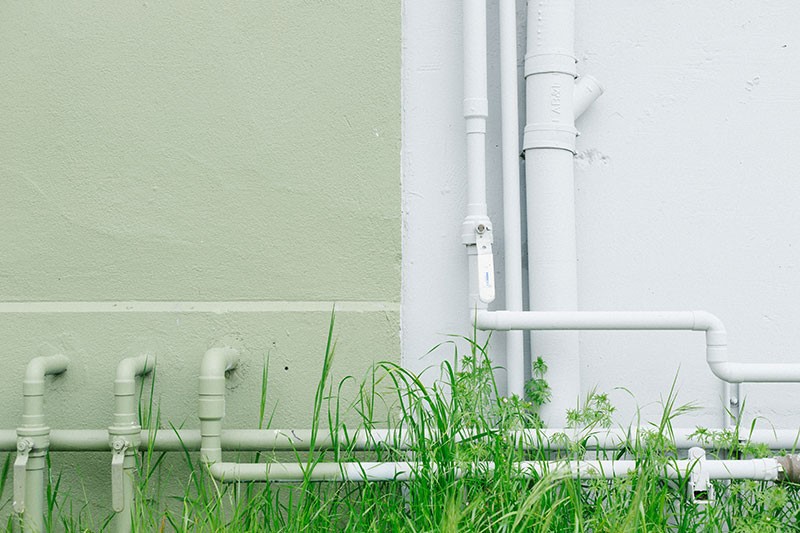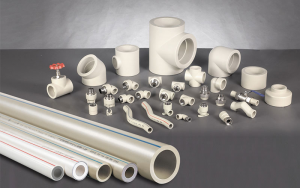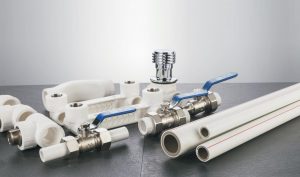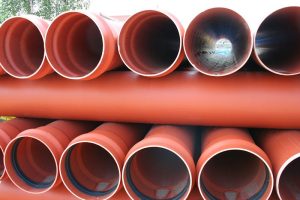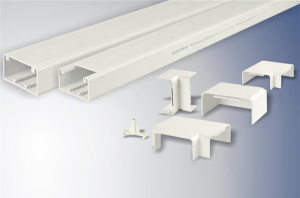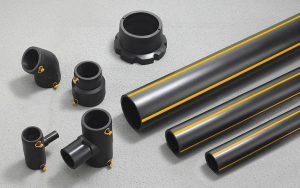There are five major home plumbing pipe types which are typically found in residences of any size. These help you to enjoy both hot and cold water in your home. They also form the drain and vent systems which are used in your house. By being able to identify the home plumbing pipe sizes quickly, you can accurately describe any problems with them to your plumber.
Overview of Home Plumbing Systems
Whether you live in an older home or a new construction, you will find the following types of pipes in your home:
- PEX
- PVC
- ABS
- Copper
- PPR
Each of these pipes is used in different systems. Due to their nature, some pipes are better suited to certain uses and projects than others. The systems in use in your home include:
- Water supply system
- Drain waste vent system
- Kitchen plumbing system
- Bathroom plumbing system
Your water supply system carries hot and cold water to every part of your home, including your laundry room. The pipes used in the water supply system must carry water safely from the source to your appliances, such as your washing machine. Valves and faucets are used to control the flow of water in this system.
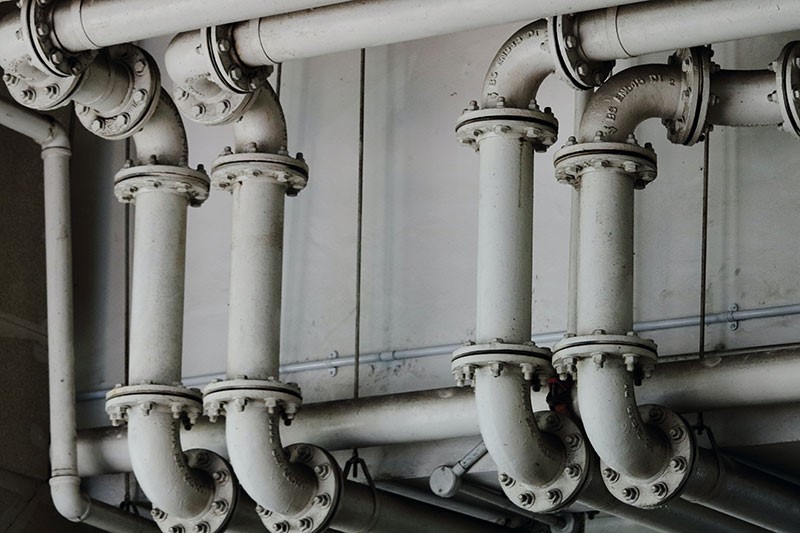

Your drain, waste and vent system ensures that you can relax in your home, instead of being affected by sewer gases. The pipes in this system are usually wide and they carry wastewater to your city’s sewer line. If you have a septic tank or a septic field, these wide pipes will carry your wastewater there instead.
Your kitchen plumbing system consists of your kitchen’s water supply lines and sometimes, a gas supply pipe. The cabinet in your kitchen usually conceals a lot of the plumbing. A gas connector near to your gas range is used with that appliance.
Your bathroom plumbing system contains more pipes and fixtures than any other system in your home. Each of the fixtures in your bathroom has a direct connection to the water supply, vent system, waste and drains. People usually get their water supply to the bathroom from a well or a pipe that connects them to the city’s main supply of water.
How Does Your Home's Plumbing Work?
Your home’s plumbing is complex but fairly simple in terms of what is taken in and what is put out. Fresh water from a well or the main supply offered by your city is taken into your home. Water supply pipes then distribute this fresh water to your kitchen, laundry area and bathroom.
Once the water is used for washing, cooking and so on, the water is taken away from your home via the drain, vent and waste system. This waste water is washed to septic tanks or your local sewage system, where it is treated.
Types of Plumbing Pipes You'll Find in Homes
There are five types of pipes that you may need to change in your home at some point. is very professional in manufacturing plumbing pipes like PPR pipes, which are the most commonly used pipes in the home. LESSO PPR pipes are of high quality, so once you replace your pipes, they will last a long time, saving you stress and the cost of buying new pipes often.
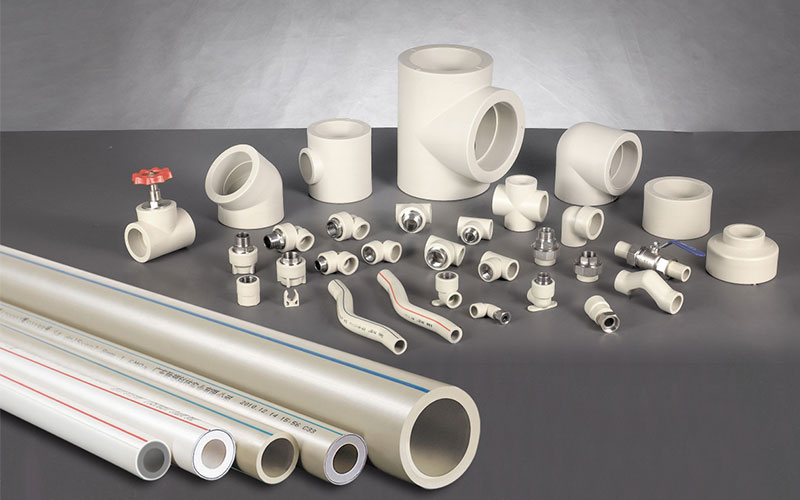

PPR
PPR pipes are the most common type of pipes so you will find these in any home that you purchase, regardless of how large it may be. These pipes are produced based on polypropylene pipes. They are hollow and often have a circular cross-section, although there are some exceptions.
PPR pipes can carry material that can flow easily, including liquids and gases. They are considered environmentally friendly and they are durable. Since these pipes are resistant to damage from corrosion, they can safely be used to carry both hot and cold water in your home. There are alternatives to PPR but PPR is the most affordable option and this has caused it to be chosen above other options. LESSO has PPR pipes to match your budget.
PVC
PVC is often used as a line pipe in home plumbing. The surface hardness and tensile strength of the PVC pipe are strong, the inner wall is smooth, which helps the water flow smoothly. As a result, PVC pipe is hard to be blocked.
PVC is found throughout the water supply, drain, waste and vent system. A home plumbing vent pipe made of PVC works best at conditions requiring low pressure and low temperature, which makes it suitable for the drain line of your toilet. PVC is not suited to carrying hot water.
PEX
PEX is not found as often in all homes. Also referred to as polyethylene cross-linked pipes, they will not leach rust into your water. This makes them suitable for applications in which galvanized pipes would be a bad idea. It can be used to carry both hot and cold water and is available in different colors to make color coding easy.
ABS
ABS is usually used in sinks, tubs and other areas where a durable pipe is required. It works like PVC but ABS is black . Since it is impact resistant, it is popular for outdoor applications.
ABS pipes can withstand freezing temperatures without cracking. LESSO’s ABS series are mainly ABS DWV pipe fittings, which are sold well in North America.
Copper
Copper pipes are occasionally used to supply water. They can be manufactured as hard or soft home plumbing pipe types.
Copper pipes are precious metal pipes and are usually used in high-end commercial venues. Considering the price, they aren’t ideal for homes with some types of well water.
Conclusion
Your home plumbing can look like a complex set of pipes but if you take the time to learn how each system works, y ou’ll become a more confident homeowner. You’ll be able to navigate any problems that you experience with your home plumbing system and solve problems yourself or with the help of a plumber.
Recommend Reading
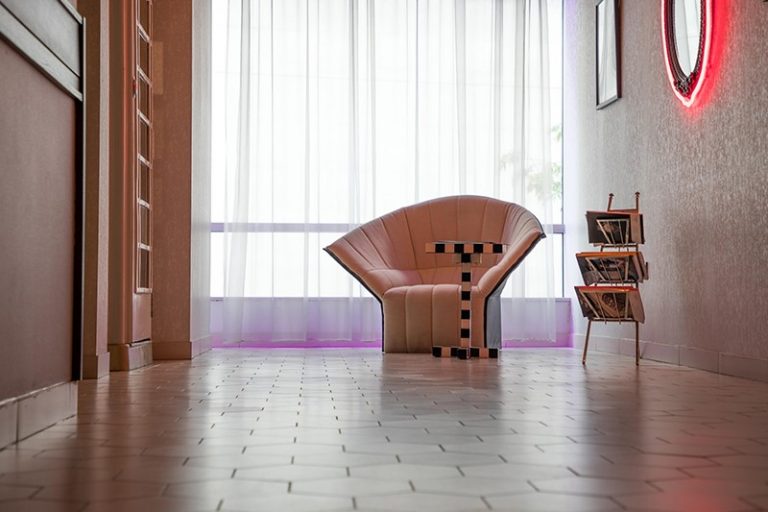

Ultimate Guide to Floor Heating Pipe
There are various heating systems used in homes, and floor heating is one of the best ways to heat your home. Floor heating can emit
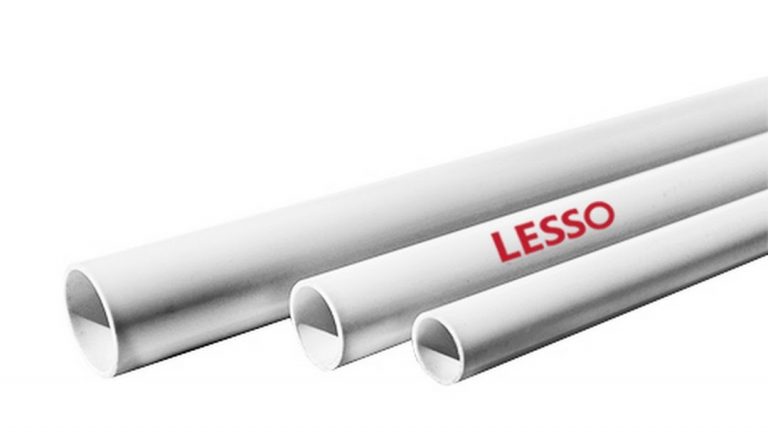

Ultimate Guide to PVC Pipe
Although working with plastic pipes is easy, you still need plastic pipe guides to get the best results. As PVC has replaced most alternatives that


